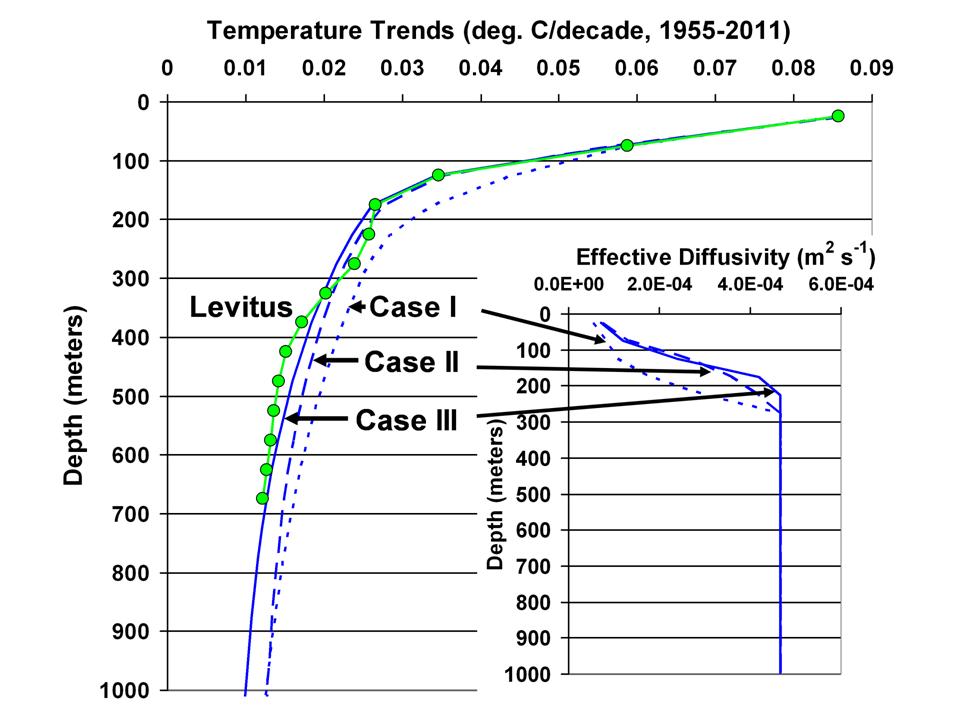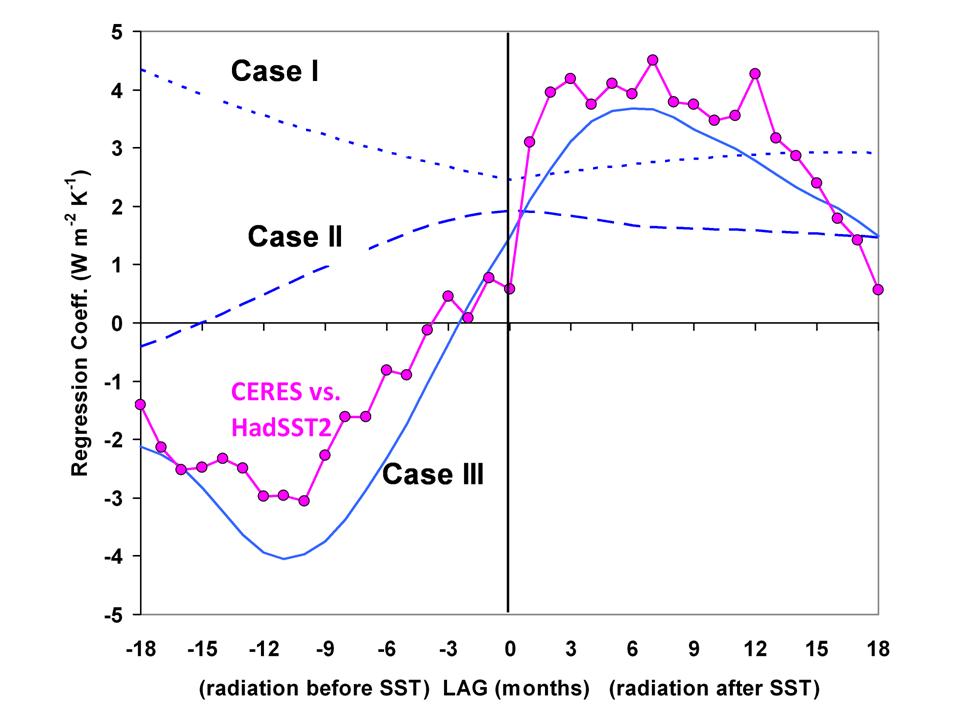Roy Spencer and his colleague Danny Braswell have a new paper out claiming that climate sensitivity is very, very low: 1.3 degrees Celsius. Remember, the recently published WGI report of AR5 gave a range for Equilibrium Climate Sensitivity (ECS) of 1.5-4.5 and for the first time in its history IPCC did not give a best estimate for ECS. So Spencer’s new estimate lies outside the lower boundary of the IPCC AR5 range.
In the last report in 2007 their best estimate was 3 degrees Celsius. An ECS of 1.3 C by the way is very close to the theoretical radiative effect of a doubling of CO2 so it suggests that the positive feedbacks (mainly water vapor and clouds) that produce the 3 degrees of warming in GCMs are not taking place in the real climate.
Readers of this blog are probably aware that in the past year or so there have been a number of papers claiming that ECS is relatively low (between 1.5 and 2 C) based on observational data (Ring et al, Lewis, Aldrin et al, Otto et al, Masters). These studies use our best observational data for the period 1850-2013 (change in global average temperature, change in total forcing, change in ocean heat content). In doing this in practice they assume almost all the warming since 1850 is due to humans, for the simple reason that available forcing estimates for the sun over this period are very small. Note: these studies do take the recent “extra” heat in the oceans into account and therefore do not conflict with the recently popular hypothesis that try to explain the standstill in warming with heat going into the deep oceans.
Spencer and Braswell use a different period (1955-2010) and a different method than the above mentioned studies. They do use the same numbers for the total forcing though and the main reason their estimate for ECS is even lower is that part of their warming is “explained” by El Niño and La Niña events. They use a very simple 1D model and then look for the best parameter settings to describe the warming of the oceans in the period 1955-2010.
The figure above is from the paper and reposted on Spencer’s blog. In green the Levitus dataset for the warming of the oceans. Note the scale, below a depth of 100 meter the warming is less than 0.04 C/decade. Spencer and Braswell used three different “scenario’s” (cases) for their model. The first is the “traditional” scenario in which the warming of the oceans has to be explained with the standard forcings and no assumed effect of ENSO. In the 1D model this gives too much warming of the oceans and a climate sensitivity of 2.2 C, which Spencer calls in general agreement with the more complex 3D GCMs. This is only partly true as GCMs on average have an ECS of around 3 C.
In the second case they add the observed history of El Nino and La Nina activity (from the Multivariate ENSO Index, or MEI) as a change in ocean mixing alone (non-radiative effect of ENSO). The climate sensitivity of the 1D model then comes down to 2 C. In the third case they also allow for any radiative effects associated with ENSO. Climate sensitivity then comes further down to 1.3 C. In that case the fit between the 1D model and the data is also best.
As Spencer explains on his blog:
But the third case (CASE III) is the one we were really interested in, because it addresses the debate we have with Andy Dessler over the role of cloud variations associated with El Nino and La Nina. I maintain that the global atmospheric circulations associated with El Nino lead to a slight reduction in global albedo, and so a portion of El Nino warming is actually due to radiative warming of the system, not just a temporary reduction in upwelling of colder water.
In other words, in addition to the model specified feedback parameter (climate sensitivity) which determines how much radiative energy is lost by the Earth to space in response to warming, we also allow the model to change the Earth’s radiative balance preceding warming (or cooling) due to El Nino (or La Nina). The time lead or lag of this “internal radiative forcing” is adjustable, and the model “decides” the best match to the observations.
Spencer and Braswell for some years have a debate with Andy Dessler about the socalled cloud feedback. Are clouds changing after the temperature changes (Dessler) or can the temperature also change after cloud changes (Spencer). I covered this debate late 2011 in an article for Natuurwetenschap & Techniek (pdf in Dutch).
What happens according to Spencer is that prior to an El Nino more sunlight is warming the oceans, probably due to lower cloud cover. The evidence for this comes from the CERES satellite with measures top of the atmosphere radiation (both reflected shortwave (sun) and longwave (infrared):
The figure shows that radiation (sunlight) starts to warm up the oceans already 9 months before the El Nino. This suggests the warming during an El Nino is not due to exchange of heat between ocean layers alone, but also due to radiative processes (probably a change in clouds). Spencer and Braswell call this process internal radiative forcing. It is a radiative forcing that is caused by the chaotic climate system itself and not by external forcings like greenhouse gases, aerosols or the changes in solar radiation. Note that Case I and II cannot explain this relationship between the Sea Surface Temperature (SST) of the oceans and the outgoing radiation measured by CERES. As Spencer puts it:
In simple terms, the climate system is chaotic, capable of causing global warming (or cooling) all by itself. There probably is no magical normal average albedo, keeping the same amount of sunlight coming in to the climate system year after year. As I keep reminding people, the increase in ocean heat content over the last 50 years is equivalent to a 1 part in 1,000 change in average radiative energy flows. Do we really think nature cannot cause such small changes all by itself?
In a future post I will try to summarise the history of this paper deducted from several earlier blog posts. It took Spencer and Braswell quite a while to get this published (ultimately in a rather unknown paper). This probably has to do with gatekeeping in the field as Spencer also admits on his blog:
There needs to be more studies of this type, and I am at a loss to explain why they haven’t been performed. They are relatively easy, and don’t require a marching army of climate modelers. Yet, I will tell you that it is virtually impossible for someone like me to get a proposal specifically funded to perform such a study, because a few gatekeepers in the science community make sure during the peer review process that it doesn’t happen. Instead, we have to piggy-back on other funded projects we have.



